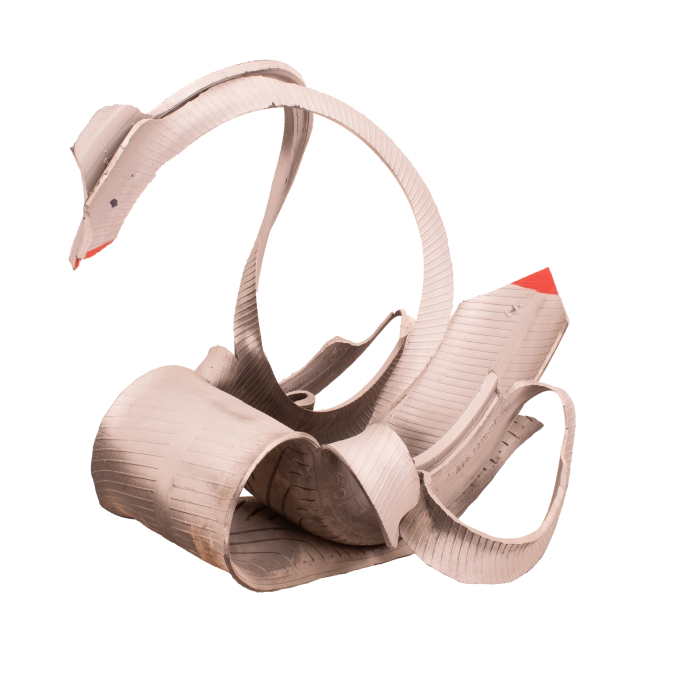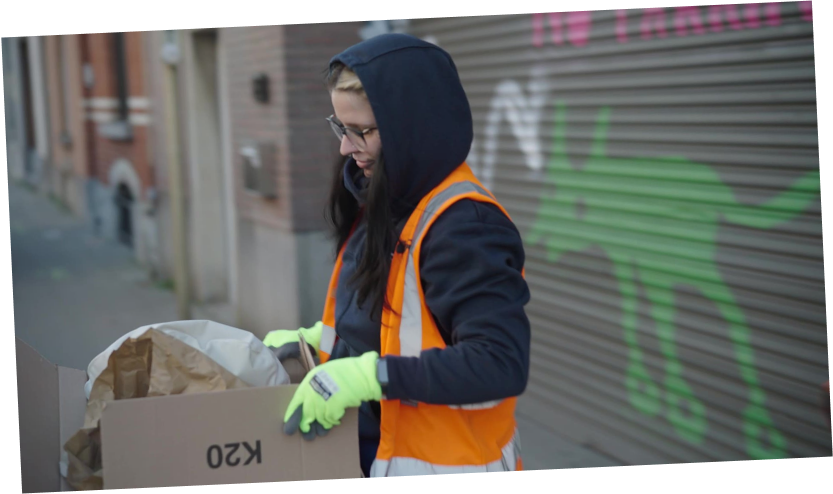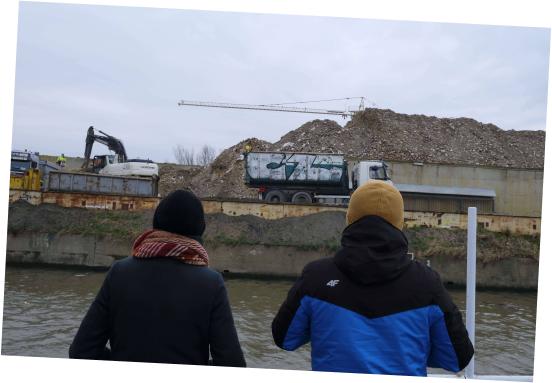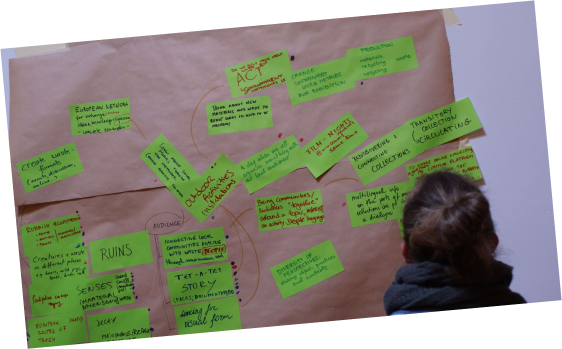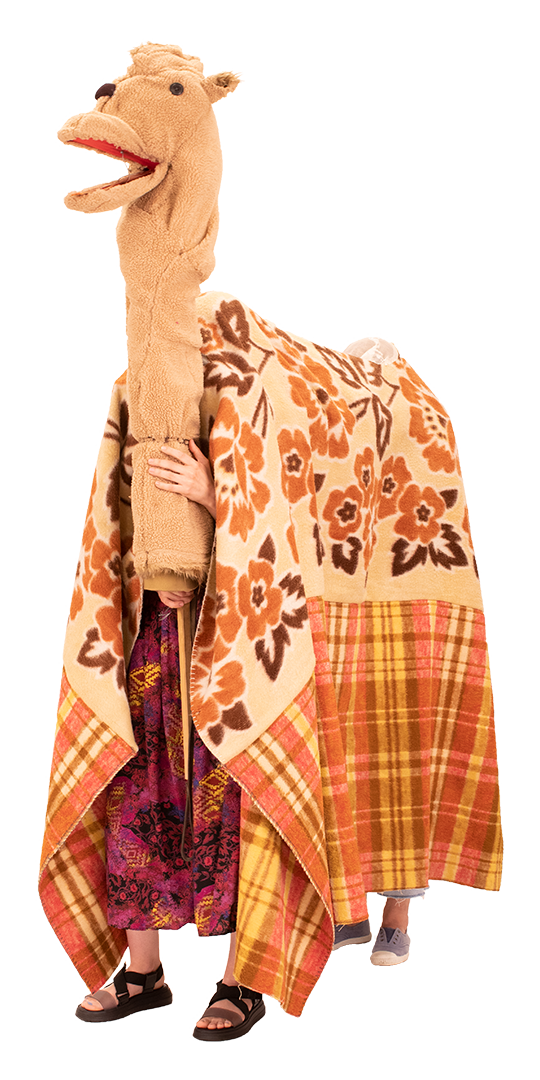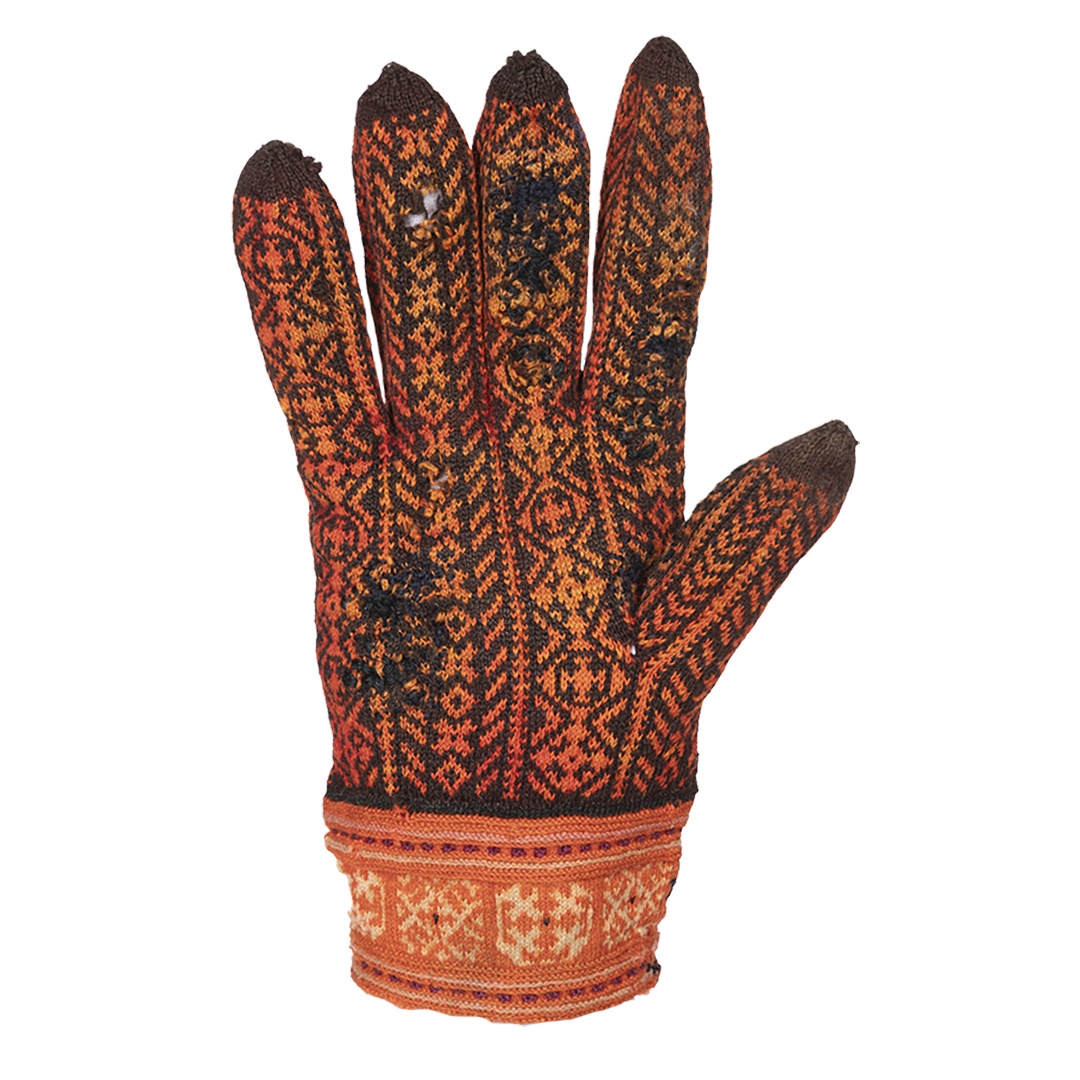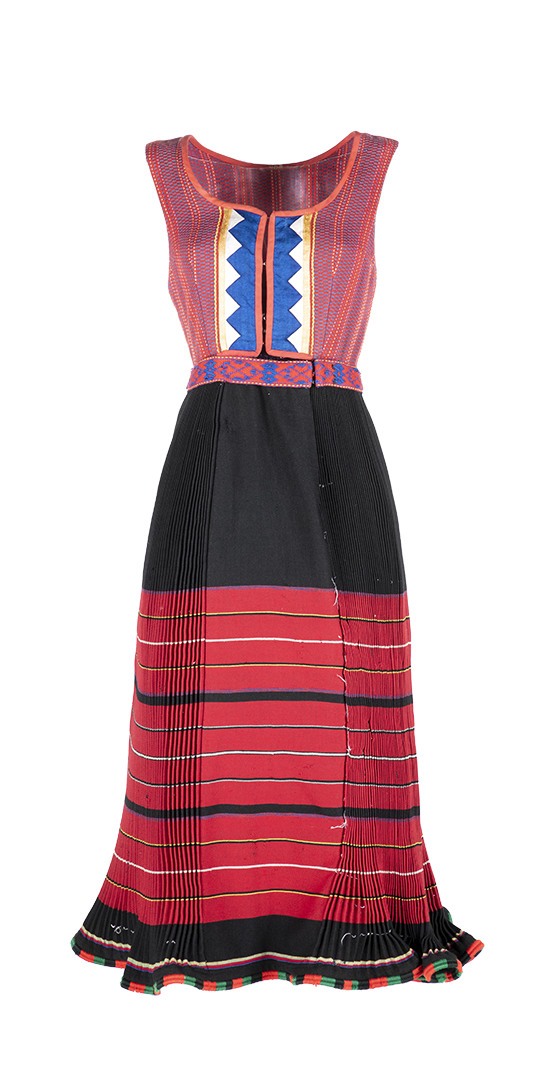Artist/Maker Wiktor Latawiec, Marzena Latawiec, Monika Zuba
Date Production/Creation
2011
Entry in the museum collection
2011
Place of origin
Radomyśl nad Sanem, Podkarpackie Province, Poland, Europe
Current location
National Ethnographic Museum in Warsaw, Warsaw, Poland
Material
Polyester, wool, wood
Dimension
Length: 100 cm; Height: 157 cm; Width: 30 cm.
Inventory Number PME 58233/1-4
Keyword Cultural heritage Costume Textile
Copyright PME/NEM
Status In storage
Image Credit Photograph by Edward Koprowski
Old traditions can feel irrelevant. But they can also inspire new ways to make the future.
What is this object about, who are the people behind it?
Many local communities have preserved customs that, from the perspective of the big city and the dominant cultural model, are completely irrelevant or have been removed from the cultural repertoire of their time. Within the local community, they have changed their function from magical and social to identity and play. Nevertheless, they are still being explained in an ethnographic-historical context, in an attempt to understand the world in terms of strangeness, magical procedures, social contacts and the dualism of worlds. The carnival procession in Radomyśl nad Sanem is one such custom. It was restored after years of hiatus by a group of young people (the creators of the costume), who obtained information about it from the Radomyśl’s oldest resident, Gizela Krajewska. They themselves inspired the local authorities and cultural centre.
What places is this object related to, how European/transnational is it?
The camel as a specific disguise is local. It is the realisation of an idea by several people from the small town of Radomyśl nad Sanem. Made for the purposes of a local tradition (the Costume Parade), it had to be functional, i.e. fully cover the participants. One of the elements of the parade is where the local parish priest tries to guess the participants’ true identities. On the other hand, as a carnival disguise, it fits into the broader context of the European carnival and its local traditions. With its form, it refers to issues which go beyond the local: the exoticness of the animal, with its Arab herder and Moorish rider, can be read as a local reflection on migration.
Why and how did this object arrive in the museum’s collection?
In 2014, the museum team carried out a project entitled "Carnival, King of Europe". As part of the field research, the team visited various places where the carnival tradition is still alive, one of which was Radomyśl nad Sanem. The camel costume stood out from the others on account of the inventiveness of the creators. It was not made on the basis of a costume or mask that had been bought, but was entirely designed from scratch. The camel is part of an ensemble of characters that also includes the "Moor" and the "Arab".
What is the relation of this object to waste?
The main dimension linking the camel to the broader concept of waste in this case is the origin of the materials: old blankets, wood offcuts and other fabrics.

